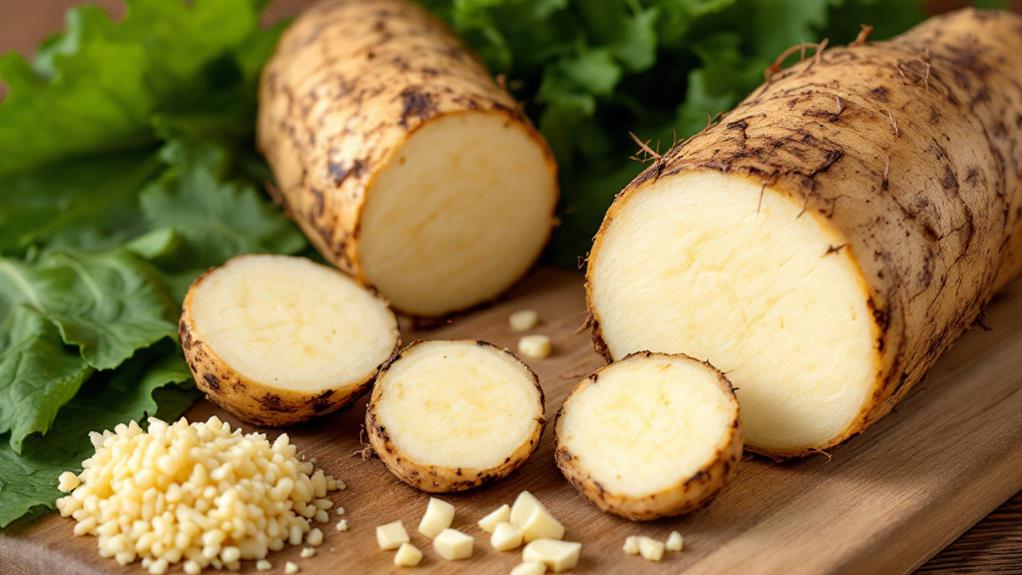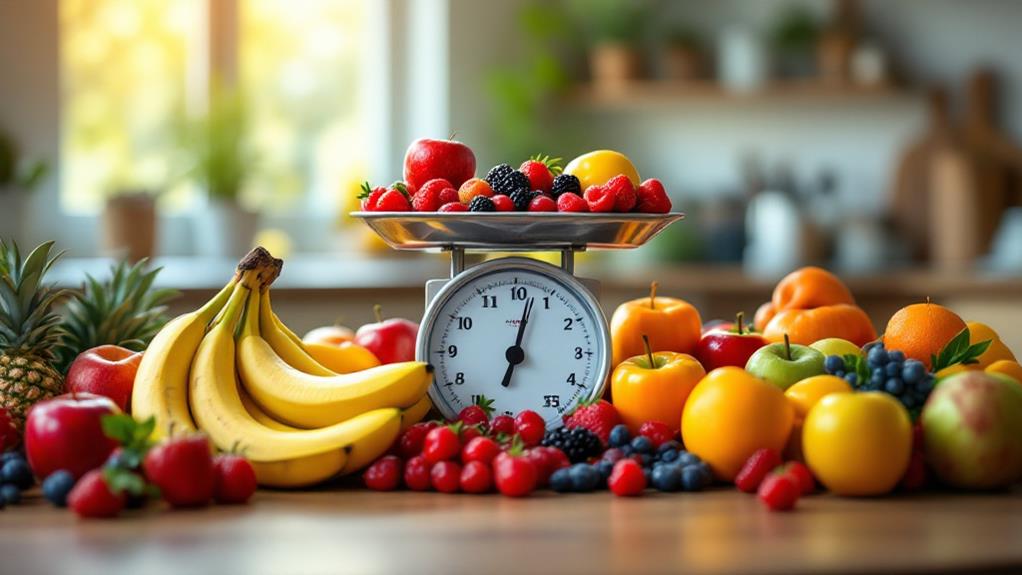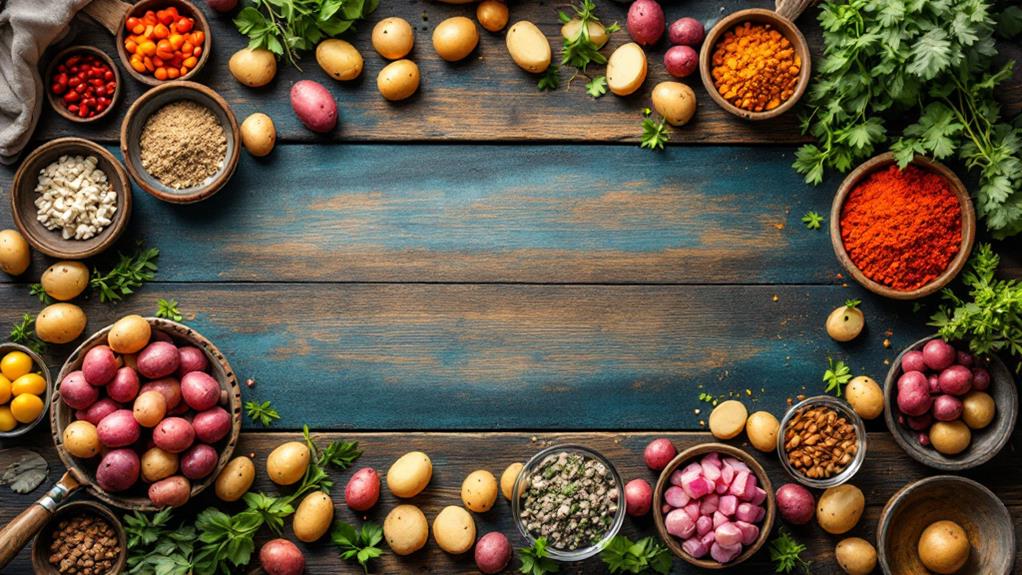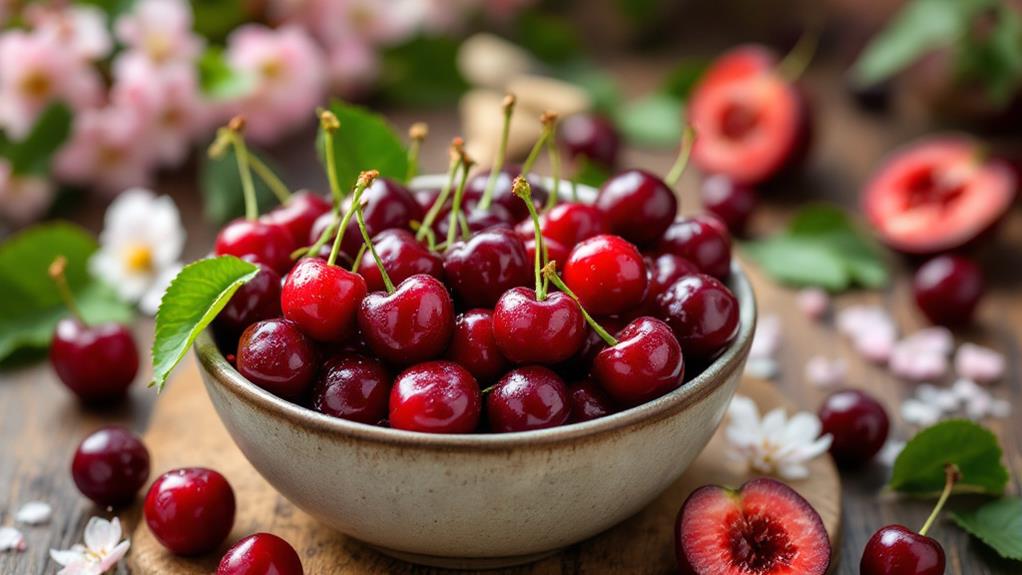Facts About Rambai Fruit Everyone Should Know
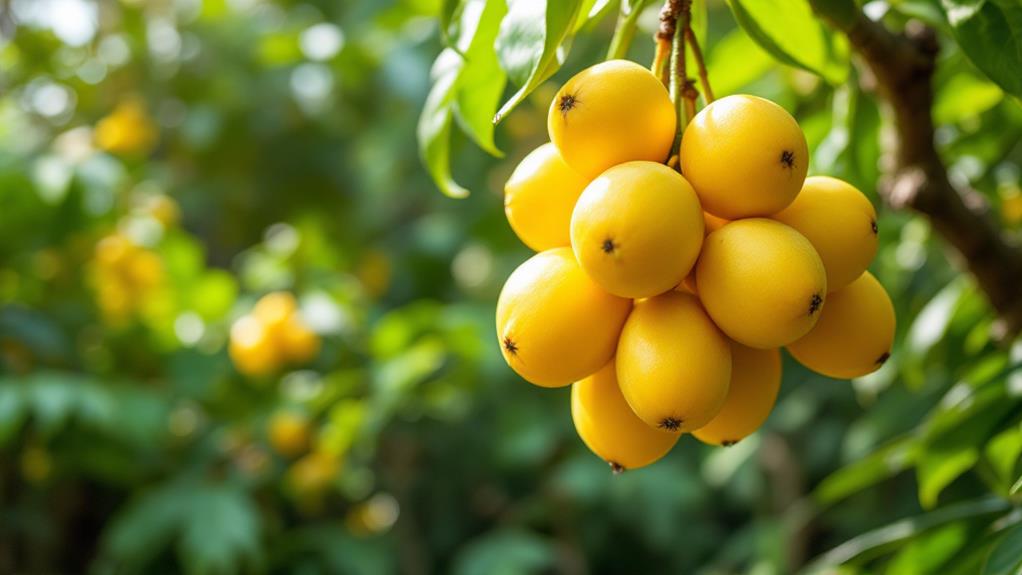
Rambai fruit is a delightful tropical treat you should investigate. These small fruits, ranging from oval to oblong, burst with a sweet-sour flavor that intensifies as they ripen from salmon to brown. They're a powerhouse of vitamin C and vital minerals like potassium and calcium. Perfect for fresh snacking or adding a tangy twist to traditional dishes, rambai can also be transformed into juices and jams. Native to Southeast Asia, rambai holds a deep cultural significance, especially during festivals, and thrives in regions like Indonesia and Malaysia. There's so much more about this fascinating fruit to uncover.
Description and Taste
Rambai fruits are small, measuring 2-3 cm in diameter, and come in shapes that range from oval to round to oblong. As you peel back their firm, semi-thin skin, you'll notice colors shifting from salmon to brown and yellow. This easily removed skin gives way to a fascinating interior. When ripe, the skin may wrinkle slightly, a sign that the fruit has reached its peak softness.
Inside, the rambai fruit reveals its juicy, translucent white pulp, divided into 3-5 segments. Each bite offers a delightful experience as the pulp is slippery and juicy, leaving a mild, slightly acidic flavor on your palate. If you're expecting a straightforward taste, you're in for a surprise—the flavor of rambai fruit dances between sweet and sour notes. This unique combination makes it an intriguing treat for your taste buds.
As you investigate the taste further, you'll find that the sweetness intensifies with the fruit's skin color. Typically, darker-skinned rambai fruits indicate a sweeter profile, while lighter-skinned ones might lean towards a sharper, tangier taste. Enjoying rambai fruit is an expedition of flavors, each bite offering a delicate balance of sweet and sour sensations.
Seasonal Availability
While you've investigated the captivating flavors of rambai fruit, understanding when to enjoy them is just as significant. This fruit's seasonal availability is primarily during the summer and winter months. It's intriguing how the local climate conditions across Southeast Asia influence its ripening and harvesting times. You'll find that rambai's peak availability aligns with traditional fruit harvesting periods, making it a sought-after delight during these times.
In Southeast Asia, regional variations can affect when rambai is harvested. For instance, different areas might showcase unique harvesting schedules due to climatic nuances. Curiously, rambai is also prominently available during the Chinese ghost month, particularly on the 15th day of the 7th lunar month. During this time, it's frequently used in prayers and offerings, adding cultural significance to its seasonal peak.
The seasonal access to rambai can shift consumption patterns, driving heightened interest and demand when the fruit is at its best. Knowing when rambai is in season allows you to savor it at its freshest, enhancing your culinary experience. So, keep an eye on its availability to enjoy this tropical treat when it's at its most flavorful.
Botanical Classification
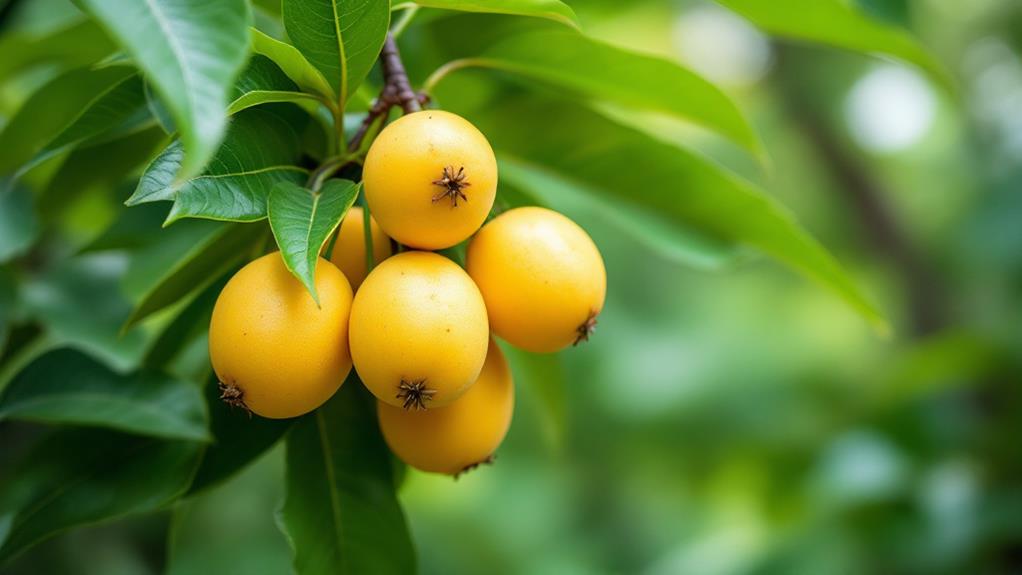
Exploring the botanical classification of rambai, you'll find it scientifically known as Baccaurea motleyana, a member of the Phyllanthaceae family, which encompasses a range of tropical fruit-bearing plants. This classification places rambai among a varied group of plants known for their unique reproductive characteristics and adaptability to tropical climates.
The identification of Baccaurea motleyana dates back to 1866 when botanist J. Motley recognized the fruit in Southeast Borneo. This recognition led to its formal taxonomic validation, anchoring its place in botanical literature. The rambai tree itself is quite a sight, growing up to 18 meters tall with a trunk diameter of about 0.4 meters. It's characterized by a low, bushy crown and dense foliage that provides ample shade.
The rambai tree is dioecious, meaning it has separate male and female flowers. This separation is essential for fruit production, as both types of flowers are needed to produce the fruit. Known by different names such as Rambi, mafi-farang, Bubi, and leteku, the rambai tree showcases its widespread recognition across various regions. Understanding its botanical classification improves your appreciation of this unique fruit and its rich history.
Nutritional Benefits
Packed with an array of nutrients, the rambai fruit offers several health benefits that make it a valuable improvement to your diet. One of its standout features is its high vitamin C content. Just two to three rambai fruits can provide your daily recommended intake, supporting your immune system and strengthening general well-being. By incorporating rambai into your diet, you're not just enjoying a tasty treat but also giving your body a nutritional uplift.
Beyond vitamin C, rambai contains important minerals like phosphorus, potassium, magnesium, and calcium. These minerals support critical bodily functions, such as bone health and proper muscle function. If you're looking for a low-calorie snack that aids in weight management, rambai is a perfect choice. It's low in calories and high in water content—83.7 grams per 100 grams—which helps keep you hydrated and feeling refreshed.
Don't overlook rambai's vitamin B2 content either. This vitamin plays a key role in energy metabolism, helping your body convert food into energy efficiently. So, with every bite of rambai, you're not just savoring its unique taste but also reaping its impressive nutritional benefits.
Culinary Uses
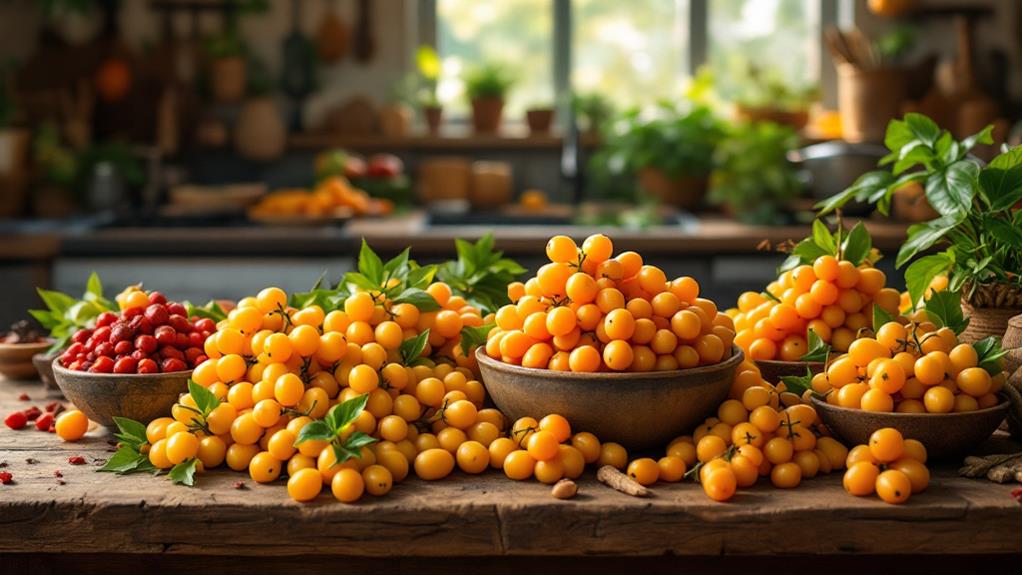
Rambai fruit offers a delightful range of culinary uses, perfect for those seeking to investigate new flavors. You can enjoy Rambai fruits in a variety of ways, starting with consuming them fresh. Simply remove the skin to savor their mild, sweet-sour taste, which varies between sweet and sour varieties. The versatility of Rambai fruits makes them a staple in diverse culinary traditions.
Explore these exciting culinary uses:
- Traditional Dishes: Incorporate Rambai into dishes like ulam, where its flavor complements other ingredients beautifully.
- Cooking Techniques: Boil or sauté the fruit for different textures and flavors, adding depth to your meals.
- Beverages: Process the fruit into invigorating juices or ferment it into organic vinegar and liquor for a unique drink experience.
- Pickling: Pickle Rambai fruits to improve curries with a tangy twist that raises the dish's flavor.
- Seasoning Alternative: Dry and grind the fruit's edible skin to use as a groundbreaking seasoning alternative.
Cultural Significance
While it might seem like just another tropical fruit, Rambai holds deep cultural significance in Southeast Asia. It's not just about its sweet flavor; it's about the memories and traditions it embodies. During traditional festivals, especially around the Chinese ghost month, Rambai fruit is a staple in prayers and offerings. You'd find it in homes as a part of these ceremonial practices, reflecting its spiritual importance.
Rambai isn't only tied to rituals but is also a nostalgic reminder of simpler times. Many recall childhood days spent in home gardens, climbing Rambai trees, and sharing the fresh fruit with friends and family. It's more than just a fruit; it's a piece of your cultural heritage.
Local gatherings often feature Rambai not just for its taste but as a symbol of community connection. It's common to see playful traditions like seed-spitting contests, which bring laughter and joy, further cementing its role in social bonding. Rambai has carved a niche in regional culinary heritage, valued not just in diets but as an integral part of community identity. It's a small fruit with a big cultural impact.
Geographic Distribution
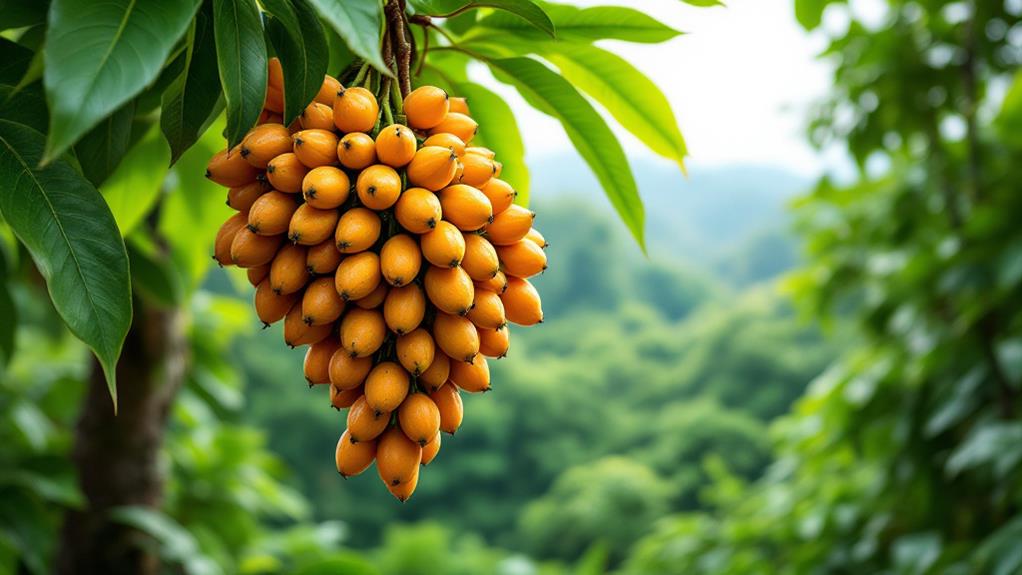
Beyond its cultural significance, you'll find Rambai fruit thriving across the landscapes of Southeast Asia. This lively fruit, scientifically known as Baccaurea motleyana, is native to the tropical regions of Indonesia, Malaysia, and Thailand. Its presence is particularly prominent in areas like North Sumatra, Kalimantan, and West Java, where the fruit grows wild and is cherished by locals.
Rambai trees are well-suited to lowland environments, flourishing in forests and home gardens. They prefer well-drained alluvial soils and can thrive at altitudes up to 900 meters. Even if you're exploring busy local markets across Borneo, Bali, and Peninsular Malaysia, you're likely to encounter this unique fruit.
Here's what makes rambai fruit's geographic distribution fascinating:
- Rambai fruit is native to diverse regions within Southeast Asia.
- It grows wild in tropical climates and is cultivated locally.
- You can find it in markets in Borneo, Bali, and Peninsular Malaysia.
- It thrives in lowland forests with well-drained soil.
- Although not widely commercialized, it's a popular choice for home gardens.
Rambai's adaptability and ornamental appeal make it a beloved part of Southeast Asia's botanical landscape, enriching both natural and cultivated environments.
Health Implications
Packed with nutrients, rambai fruit offers a myriad of health benefits that you shouldn't overlook. With its fragrant aroma, this lowland fruit is a powerhouse of vitamin C. Just two to three fruits meet your daily requirements, giving your immune system a significant enhancement. You'll find that it's not just about vitamins; rambai also contains crucial minerals like phosphorus, potassium, magnesium, and calcium. These minerals contribute to your comprehensive health and well-being, making rambai a wise inclusion in your diet.
One of the remarkable health implications of eating rambai is its low-calorie content, which makes it an excellent snack option for weight management. It's high in water content, promoting hydration, and contains vitamin B2, which aids in energy metabolism. This not only keeps you refreshed but also provides the nutrients needed for your daily activities.
Moreover, rambai's antioxidant properties and bioactive compounds have been linked to a lower risk of chronic diseases. These elements help reduce oxidative stress and inflammation, offering potential protection against ailments. So, next time you're looking for a healthy snack, consider reaching for a few rambai fruits to enjoy these benefits.

